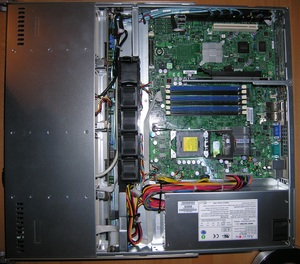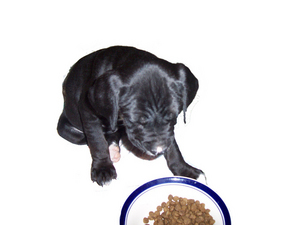It’s not very difficult to build a computer from scratch. In most cases a person with moderate computer knowledge can upgrade their old machine. An overhaul of your old computer will give you a brand new machine and save you thousands of dollars.
I’ve put together a list of decent hardware and was able to come up with a brand new computer that is lightning fast for less than $450.
Step One: Evaluate Your Hardware
To build a computer economically it is important that you take everything possible off of your old computer. The reusable parts in this project include your old computer’s monitor, mouse, keyboard, hard drive, and external case.
Additional hardware you will need for this project:
ASUS M5A97 Motherboard: $95
AMD Phenom II 3.6GHz chip: $120
Patriot 4GB DDR3 RAM (2 sticks): $44
Seagate Barracuda 500GB Hard Drive: $80
EVGA GeForce 210 Video Card: $33
Antec 550W Power Supply: $50
*Note: All prices taken from NewEgg.com on Jun. 24 2012.
Step Two: Dismantle the Machine
Destruction is always my favorite phase. Computers have a lot of tiny screws so it’s helpful to have a mini screwdriver set on hand. You can get one of these for cheap or just borrow it from your neighbor.
There are wires that come from your computer’s power switch and external fans. Remove these wires from your motherboard but leave them in place in your case so you can connect them to the new motherboard.
The only component that you will leave in the machine is the DVD drive. Everything else has to come out including the motherboard and power supply. Pay attention to how and where things are mounted this will save you time when you put the new components back into the case.
Step Three (Mount the New Hardware)
Before you mount anything to the case’s chassis be sure to mount your new processor, chip fan, and RAM to the new motherboard. Use the silicone grease that comes with the chip when you clip on the chip fan. Leave the video card off at this point, you will mount that later.
Once the processor, chip fan, and RAM are secured to the motherboard screw the motherboard onto your old case’s chassis.
Motherboards come in different sizes but most cases have alternate screw holes to accommodate different motherboards. Make sure the plugs on the back of the motherboard are lined up with the back of the computer case so you can easily connect your keyboard, mouse, and printer later on. Once you’ve got it lined up screw the new board to your case. Be sure not to tighten the screws too much, they could damage the board.
With the motherboard securely on the chassis you can mount your video card to the PCI Express slot on the motherboard. The PCI Express slot is a short slot that matches the pins on your video card. Once the card is mounted screw the hardware in to secure it to the back of the case.
Slide your new hard drive into the slot where your old hard drive was in the case. If there is slot for another hard drive put your old drive in as well. You will need this later to retrieve your old information.
Double check to make sure all of your new hardware is screwed down and secured properly.
Step Four (Mount the Power Supply)
Mount the power supply to the case. This usually requires about six small screws that drive directly into the computer case.
This is where things get intimidating. You will notice that your power supply has an array of wires hanging off of it that aren’t connected to anything. Don’t worry; it’s not as bad as it looks.
Make sure the power supply is not plugged into the wall.
There are two main plugs on the power supply that must be plugged into the motherboard. These plugs are usually white plastic and will match pin sets on the motherboard. The first runs parallel to the RAM and the other is by the chip fan.
Next connect your DVD burner, and new hard drive to the power supply. Find the appropriate plugs from the power supply that match the back of each device.
Next connect the same devices to the motherboard with the SATA cables that came with the motherboard. Be sure to plug your new hard drive into the “primary SATA port” on your motherboard. Leave the old hard drive unplugged until after the first boot of the new computer.
After your all of your new components are plugged in you’ll notice you have a bunch of extra plugs. The power supply’s manufacture includes additional plugs so users can add new hardware. Grab a few zip ties, bound the unused plugs together and tuck them out of the way in the computer’s case.
Step Five (Wire the Case to the Motherboard)
Remember those little wires that are attached to the case’s power switch and external fans? These are the power wires for the components of your computer’s chassis. They have small two or three pin connectors that connect to a pin strip at the bottom of the motherboard. Most computer cases only have a few of these wires but the more lights and fans that are on your case, the more of these wires you’ll have.
All motherboards are different so it is best to consult the manual that came with the motherboard to determine the correct placement. The connectors will most likely be labeled “PWR” “HD” and “SW,” find the corresponding pins on your motherboard and connect the wires.
Leave the case open until after the first boot.
Step Six (First Boot)
Once all the necessary components are connected it’s time for the first boot. Make sure your power supply is plugged into the wall and your monitor is plugged into the wall and the back of the video card. Leave your old hard drive unplugged for now. Plug in your old mouse and keyboard to the back of the computer.
There is no operating system on your new hard drive yet. The first boot is just to make sure everything works together correctly. Turn your new computer on.
Because there is no operating system installed the boot process will stop at the computer’s bios screen. There is be no need to make any changes to the bios but scroll through the bios screens and make sure your new hard drive is recognized as the computer’s “primary drive.”
Step 7 (Install Windows)
Hopefully you still have the Windows operating system install disk from your old computer. If not, that will be an additional cost to this project.
Put the Windows disk in the DVD drive and follow the on-screen instructions.
Step 8 (Install Drivers)
Once Windows is installed the operating system may require drivers for some of your new hardware, particularly for your video and sound.
The motherboard comes with a disk that has all the driver packages preloaded. Insert the disk and follow the on-screen instructions. Do the same with the disk that comes with the video card.
Step 9 (Shutdown and Restart)
Once Windows and all of the drivers are installed shut the computer down. Now it’s time to plug in your old hard drive. Because your new hard drive has the operating system installed on it, the computer will recognize your old hard drive as a “slave” drive and will likely list it as an “E:” or “F:” drive in the Windows directory.
Plug your old hard drive into the motherboard via a SATA cable and also be sure to connect it to the power supply. At this point you can restart your computer and retrieve your information from your old hard drive.
That’s all there is to it. You’ll have to reload all of your software, which can take a couple of hours but the good news is your new computer is just as fast as one you would pay $2000 in a big box store and you did it all for less than $450.





